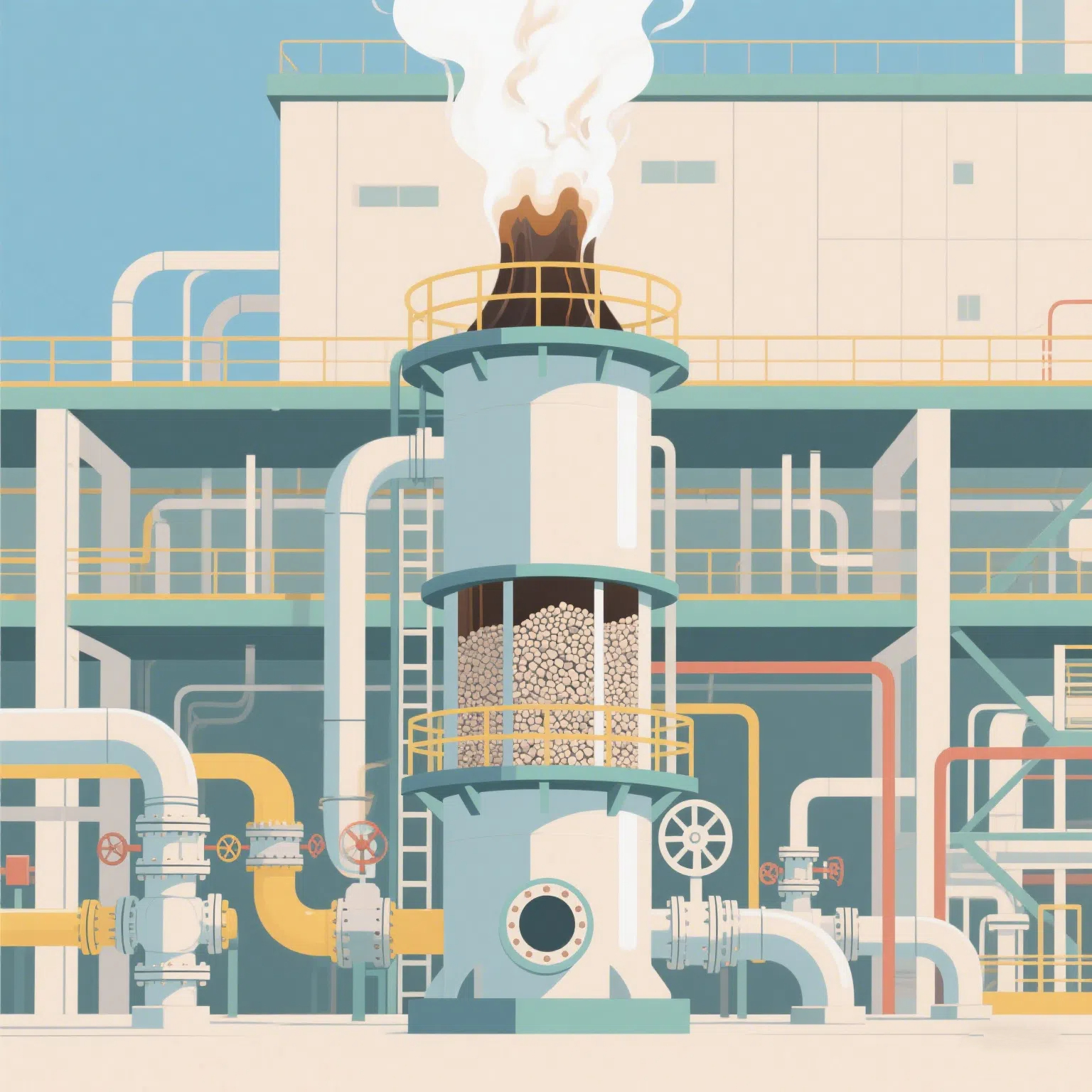


Introduction
Catalysts are the backbone of modern oil refining, enabling the transformation of crude oil into high-value fuels like diesel. While gas-phase catalysts dominate processes like fluid catalytic cracking (FCC) and hydrotreating, fixed-bed catalysts—such as ZSM-5-based solid extrudates—offer a simpler, hydrogen-free alternative for diesel refining. This blog dives into both technologies, their roles in distillation, and their impact on efficiency and sustainability.
Gas-Phase Catalysts
1. Fluid Catalytic
Cracking (FCC)
Process: Vaporized
heavy oils react with powdered zeolite catalysts (e.g., Y-type zeolites) to
produce diesel and gasoline.
Outcome: High yields
of lighter fuels with improved cetane numbers.
2. Hydrotreating
Process: Hydrogen +
cobalt-molybdenum catalysts remove sulfur and nitrogen from diesel.
Outcome: Ultra-low-sulfur diesel (ULSD) compliant with emissions regulations.
3.Non-Hydrogenation
Refining: ZSM-5 Fixed-Bed Catalysts
A growing trend in refineries is the use of solid extrudate catalysts (e.g., ZSM-5-based catalysts) for diesel upgrading without hydrogen. Here’s how they work:
Process Overview
Catalyst Structure: After
the modification of ZSM - 5 and the addition of promoters and shaped into solid
extrudates (e.g., strips) and packed into fixed-bed reactors.
Reaction: Diesel-range hydrocarbons pass through the catalyst bed at moderate temperatures (300–450°C).
-Key Reactions:
Isomerization:
Converts straight-chain hydrocarbons into branched isomers, improving diesel’s
cold flow properties.
Aromatic Reduction:
Breaks down heavy aromatics into lighter components.
Selective Cracking: Splits large molecules (e.g., paraffins) into optimal diesel-range hydrocarbons.
Advantages Over
Hydrotreating
1. No Hydrogen
Required: Eliminates the need for costly hydrogen infrastructure.
2. Lower Operating
Costs: Simpler process with reduced energy consumption.
3. Versatility:
Effective for feedstocks with moderate sulfur content.
4. Diesel Quality: Enhances cetane number and stability without sulfur removal limitations.
Typical Applications
Light Diesel
Upgrading: Refining straight-run diesel from atmospheric distillation.
Bio-Diesel Blending:
Improving the properties of bio-derived diesel fractions.
Niche Markets: Regions with less stringent sulfur regulations or limited hydrogen supply.
Why ZSM-5 Catalysts
Are Gaining Traction
1. Cost-Effectiveness:
Avoids hydrogen dependency, reducing capital and operational costs.
2. Durability:
Resists coking due to ZSM-5’s unique pore structure and acidity.
3. Flexibility: Compatible with existing refinery units (e.g., retrofitting hydrotreaters).
Challenges &
Innovations
While ZSM-5 catalysts
excel in simplicity, they face trade-offs:
Limited Deep
Desulfurization: Not a full replacement for hydrotreating in ULSD
production.
Feedstock Sensitivity: Works best with lighter, less contaminated diesel streams.
Recent Advances:
Hybrid Systems:
Combining ZSM-5 with metal oxides (e.g., tungsten) for partial sulfur
adsorption.
Hierarchical Zeolites: Enhanced pore structures to reduce coking and improve mass transfer.
Conclusion
From gas-phase FCC
catalysts to hydrogen-free ZSM-5 fixed-bed systems, refineries now have
multiple pathways to optimize diesel production. While hydrotreating remains
the gold standard for ultra-clean fuels, ZSM-5 catalysts offer a compelling
alternative for cost-sensitive or hydrogen-limited operations. By strategically
selecting catalysts, refineries can balance quality, compliance, and
profitability in an evolving energy landscape.